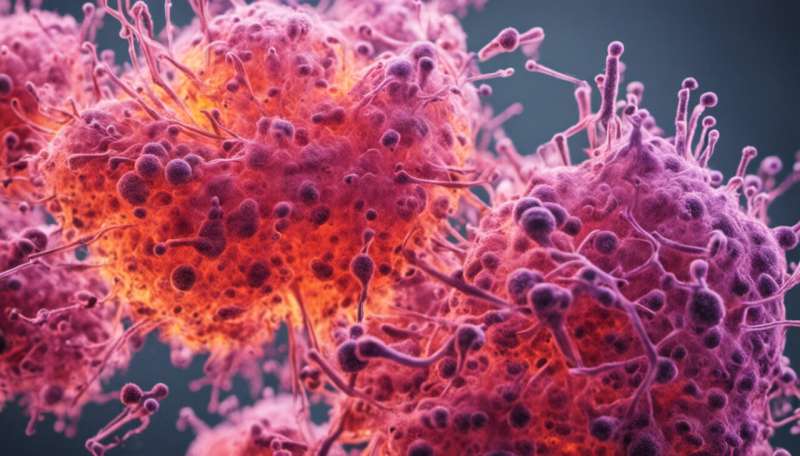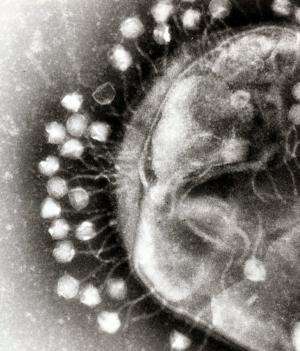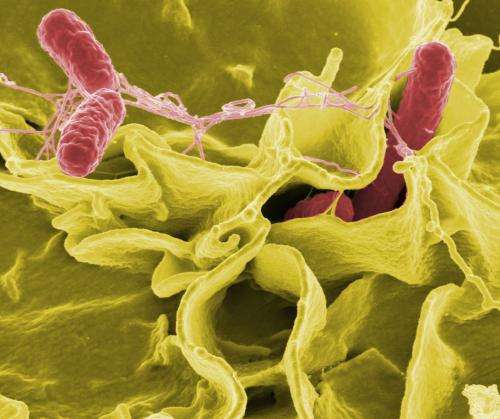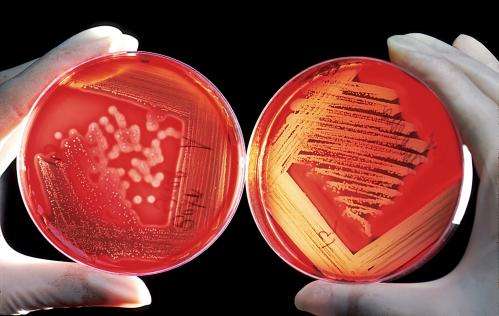Antimicrobial CRISPR-Cas systems may be better weapons against bacteria than antibiotics

Antibiotics are compounds that can kill bacteria. Many antibiotics are produced naturally by bacteria themselves as they compete for food or living space with other bacterial species. Over time, bacteria that are always exposed to antibiotics will be under selective pressure to evolve resistance to them; the members of the population that are more resistant will be the ones to reproduce more often.
Bacterial species reproduce incredibly rapidly compared to human beings, leading to rapid evolution within species. Under the right conditions, for instance, the common gut bacterium Escherichia coli can reproduce in just thirty minutes. Bacteria can also swap antibiotic resistance genes via a process known as horizontal gene transfer. That means that if antibiotic resistance develops in one bacterial species in an environment, there's a good chance other bacteria can pick up that resistance as well. It's a problem for human beings if bacterial pathogens, through this rapid evolution, develop resistance to the antibiotics we use to kill them.
In addition, there are bacteria in your body which can be good for you, and carry out functions that are important for maintaining health. Current antibiotics can't tell the difference between pathogens and these beneficial bacteria, and just wipe them all out indiscriminately. This can lead to other medical issues. For instance, it's thought that excessive antibiotic use can later lead to problems with intestinal dysbiosis, a composition of bacterial species in the gut that is associated with health problems.
What we need is not a bunch of newer, stronger antibiotics. We need smarter antibiotics, ones able to target only pathogenic bacteria while leaving non-pathogens alone, and ones which bacterial pathogens can't easily develop resistance to. For a long time, this goal seemed impossible, until the discovery of CRISPR-Cas systems in bacteria.
Using bacteria's own immune systems against them
Bacteria are constantly exposed to viruses called phage. These bacteria-specific viruses inject their own genes into the bacterial cells, hoping to co-opt the internal machinery of the bacteria to produce more phage. In response to these attacks, bacteria have devised a novel defense system involving CRISPRs, short for clustered regularly interspaced short palindromic repeats in RNA, and CRISPR-associated proteins (Cas proteins). There are different kinds of RNA molecules in bacterial cells which perform different functions, mostly relating to regulating the functioning of genes. CRISPR-containing RNAs are also naturally produced as a way to alter the functioning of invading viral genes.

CRISPR-Cas systems are naturally found in bacteria and act as part of the bacterial immune system. To summarize, a web of machinery inside the bacterial cell works to produce RNA molecules that contain these CRISPR sequences. The CRISPR sequences flank sections of RNA that match attacking phage genes. The CRISPR-containing RNA sequences can bind to invading phage genes. Then the Cas enzymes bind to the CRISPRs and cut the targeted phage gene, rendering it inactive and unable to help in making more viral particles – this stops the infection.
While CRISPR-Cas systems evolved in bacteria, the RNA and enzymes used in these systems can function in animal and plant cells as well. The discovery that we can use these systems to make custom-tailored genome-editing tools that work in our cells has led to an explosion of research activity aimed at trying to find better ways to treat genetic diseases. For example, recent research provides proof of principle for the concept in mice. Because it's easy to engineer RNA, people are now making synthetic CRISPR-containing RNAs that target genes of interest and using them with Cas enzymes, which is how this kind of custom genome editing can work.
CRISPR-Cas opens new paths for fighting pathogens
CRISPR-Cas systems have a few advantages over existing antibiotics. For one thing, it's possible to use the specificity of CRISPR-Cas systems to design them to target a single bacterial species. They can be produced to be so precise, they'll only cut up essential genes from that one species, even when the target species is mixed up with others.
They also have an edge when it comes to avoiding antibiotic resistance. Anti-CRISPR genes (for example,genes which inactivate Cas proteins) have been identified in phage, but not in bacteria. It would be difficult – or even impossible – for a bacterium to evolve resistance to a CRISPR-Cas system from a pathogenic bacterium. To do so, it would have to destroy molecules involved in its own immune system, a suicidal move.
And as we learn more about how these CRISPR-Cas systems work, we can synthesize new molecules that do an even better job than the ones naturally produced by bacteria.

CRISPR-Cas systems have a few snags
Currently published experiments require shocking bacteria with electricity to get them to take up specially designed CRISPR molecules (designed to attack specific bacteria) on a large enough scale to be effective. That's clearly not an option for bacterial infections in people! The CRISPR-Cas system can't work unless CRISPRs can be delivered in a way that is both safe for treating people AND gets enough molecules inside bacterial cells to ensure the targeted pathogenic bacteria are killed.
Some researchers are working with CRISPR-Cas systems in genetically modified phage – so-called "phagemids." They use these phagemid viruses as delivery systems to inject a target bacterial species with CRISPR-Cas machinery that can destroy bacterial genes essential for survival. This avenue of research is promising but not perfect, as bacteria can develop resistance to these phage more easily than they can to the injected CRISPR-Cas system itself. And if a target bacterium is resistant to infection by a phagemid, the phagemid can't deliver its cargo. Additionally, there is no broad-spectrum phage that targets a wide range of bacterial pathogens that we can easily modify to deliver CRISPR-Cas systems to many types of bacteria.

Hope for the future
Scientists will keep searching for other options or further discoveries that can surmount these hurdles. CRISPR-Cas systems could be a powerful weapon against pathogens, able to keep "good" bacterial communities intact while offering protection against the bacterial pathogens that have always plagued humanity.
Source: The Conversation
This story is published courtesy of The Conversation (under Creative Commons-Attribution/No derivatives).
![]()


















